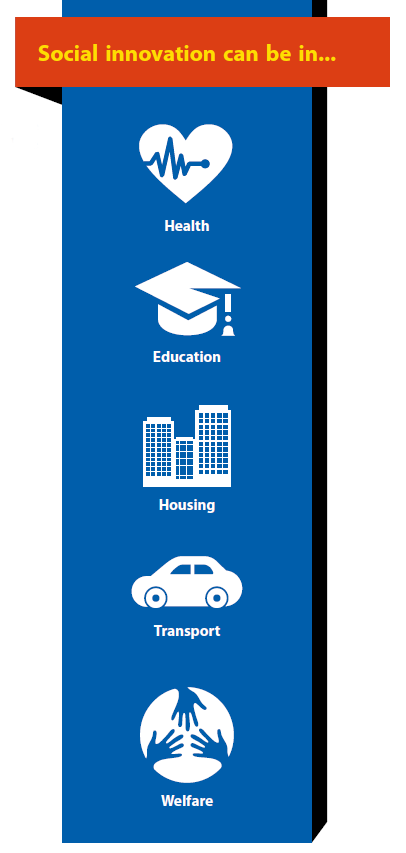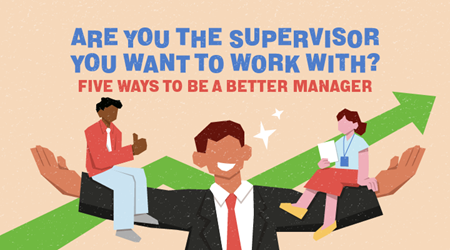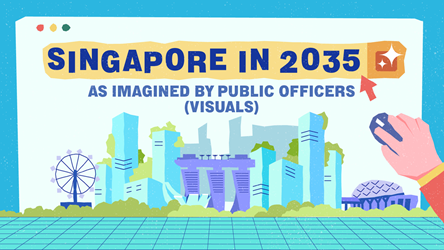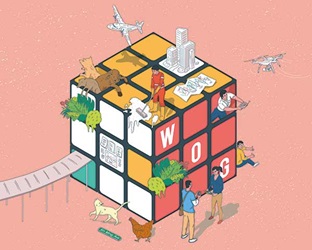Thinking Out of Boxes for Social Good

In many countries, intractable problems like high unemployment, income inequality, low quality education and homelessness clearly require urgent attention. In Singapore, while social problems have not escalated to such critical levels, issues ranging from education and public transport to healthcare and housing are vital concerns too. At home and abroad, social innovation is gaining prominence as a means to devise new solutions for crucial social issues.
What is social innovation
The Center for Social Innovation at Stanford University describes social innovation as “the process of inventing, securing support for, and implementing novel solutions to social needs and problems”.
James Phills and his co-authors add in the Stanford Social Innovation Review that the solution should be “more effective, efficient, sustainable, or just (equitable) than existing solutions.”
Who drives social innovation is changing, and there is far more collaboration than before. “In the past, governments were often pioneers of social innovation,” UK-based NESTA CEO Geoff Mulgan and his two co-authors wrote in the Open Book of Social Innovation. “The great municipal reforms of the 19th century created a new social infrastructure, as did the welfare reforms of the late 19th and 20th centuries.”
Now, governments are working with both businesses and non-profits to develop solutions. As the Center for Social Innovation in Canada said on its website, social innovation “can take place in the for-profit, non-profit and public sectors. Increasingly, they are happening in the spaces between these three sectors as perspectives collide to spark new ways of thinking.”

Entrepreneurship and innovation – not quite the same thing
While social innovation and social entrepreneurship are often talked about as the same thing, they are actually different. It is important to make a distinction, as entrepreneurship can happen without innovation. As business guru Peter Drucker said, an entrepreneur “always searches for change, responds to it and exploits it as an opportunity.”
While innovation may drive some of those opportunities, entrepreneurs can achieve business or social goals by setting up businesses like restaurants or schools without being truly innovative. Social innovation goes beyond entrepreneurship to create truly novel solutions to social problems.
As Singapore’s Social Enterprise Association executive director Teo Mee Hong said about social innovation here, “we seem to have been pragmatic” more than innovative in setting up social enterprises, so social entrepreneurs may have focused more on goals like creating jobs or helping the marginalised than on innovation.

The rise of social innovation
The Open Book authors say the main reason social innovation is taking off is that “existing structures and policies have found it impossible to crack some of the most pressing issues of our times – such as climate change, the worldwide epidemic of chronic disease, and widening inequality.”
As a result, there has been a “flowering of social innovation” – of varying levels of response from the public, private and people sectors to bring change in more innovative ways.
So while governments came up with ideas on their own in the past, there are increasingly good ideas emerging from the non-profit and business sectors. If the public sector were to take on these good ideas and implement them on a government-wide scale, the impact would be far greater than a non-profit or company alone.
Also, according to The Economist, more countries are embracing social innovation because they believe it will “do more than save a few dollars” and can “transform the way public services are provided, by tapping the ingenuity of people in the private sector, especially social entrepreneurs.”
This does not mean that social innovation works for every issue. Mr Mulgan told Challenge that while social innovation can be used “across a very wide range of fields – health, education, welfare, even transport – where the barriers to entry aren’t that high and where there’s a lot of expertise outside government,” social innovation tends to exclude territory with large capital costs like defence or big infrastructure or the “ones very close to national security.”

Social innovation
While Singapore seems to be doing relatively well in terms of economic growth, this doesn’t mean there is no room for social innovation. The reality is that critical issues remain. Passionate discussions about how best to teach students, provide healthcare for the increasingly ageing population, resolve a growing income gap and enhance transportation point to the need for greater social innovation.
For example, instead of simply cutting through the Bukit Brown Cemetery to build a road to ease traffic congestion, could more innovative solutions have emerged from crowdsourcing ideas from the people and private sectors?
In the early days of nation-building, the government was often the driver for social innovation. Groundbreaking concepts like the Central Provident Fund, Housing and Development Board estates and Electronic Road Pricing were designed to solve the critical social issues of the day.
While social innovation may not be as large-scale today, it is still happening all around Singapore. The brains behind Marina Barrage, for example, turned part of the seawater port area into a freshwater reservoir and recreation site. (See below for examples)
Guiding Light for Students
Northlight School was set up in 2007 to help students who failed the Primary School Leaving Exam twice by giving them vocational training. The goal is for Northlight “to help students stay in the education system and equip them with the necessary skills and values for work life” in a three-year programme that has character, foundation and vocational education at the core of its curriculum.” In a recent book on how citizens and government can work together to create public value, University of Waterloo professor Jocelyne Bourgon cited Northlight School as a superb example of “an innovation that involves government, education professionals, students, families and communities working together to address a pressing social need.” It has been so successful, says Dr Bourgon, that “its innovative strategies and non-conformist approaches have been copied in primary schools throughout the country and internationally.”
An Oasis in the Red Tape Desert
In giving the 2005 UN Public Service Award to the Ministry of Trade and Industry (MTI) for the Online Application System for Integrated Services (OASIS), the United Nations said that in the past “the process of visiting various agencies and filling in forms was not only cumbersome and time-consuming but also the incumbents faced red tape of bureaucracy.” Agencies operated in silos and systems were incompatible. OASIS was initiated to “create a common platform to establish greater collaboration among agencies for the application of business licences, as well as a customer-centric portal of choice for users to interact and transact with the Government to acquire licences.” Thirty agencies, including MTI and the Ministry of Finance, collaborated to analyse and reengineer the processes for licences and permits. Initial results of one OASIS component alone, the Online Business Licensing Service, which have likely grown far better, showed that processing times for licences dropped more than 16 percent to 12.5 days and businesses saved nearly $2m per year.
However, in contrast to some countries where government, businesses and non-profits are collaborating far more than before, different sectors here often seem to come up with solutions on their own to solve focused problems rather than leveraging tri-sector collaboration for social innovation.
In education, for example, the Lien Centre for Social Innovation at Singapore Management University (SMU) was set up to “inspire ideas and innovations, foster new alliances and facilitate solutions to strengthen the non-profit sector” to help resolve unmet social needs.” Other tertiary institutions, including Singapore Polytechnic and Ngee Ann Polytechnic, now have social innovation programmes for their students.
The non-profit sector is separately working to solve social issues. Along with non-profits that develop solutions, organisations like Social Innovation Park have been set up to incubate social entrepreneurs and innovators.
In the private sector, hundreds of small social enterprises, encouraged by organisations like the Social Enterprise Association or SE Hub and often with government funding, are seeking to achieve social goals while making a profit.
While government and non-profits or businesses do work together in some areas, there does not yet seem to be a fundamental trend towards tri-sector collaboration for social innovation. Impetus for collaboration is, however, growing.
In October 2010, the government launched the $450m Public Private Co-Innovation Partnership (CI Partnership) to encourage co-development of innovative solutions with the private sector to meet Singapore’s longer-term needs. The CI Partnership is based on the principle that the government can better serve the public by collaborating with, and tapping, private businesses to create innovative solutions.

Cross-collaboration is key
Embracing the reality of working with players from other sectors isn’t always easy for public officers long accustomed to being the primary source of solutions.
Governments are facing “a key challenge to find out what it means to collaborate,” said Christian Bason, director of Mindlab, a user-centred social innovation lab run jointly by the Danish ministries of Business, Taxation, and Employment.
At the Social Innovation Conference (Social iCon) at SMU in November last year, experts from around the world shared insights on why new models of social innovation are needed and how creative cross-collaboration can lead to better solutions for social problems. Their experiences provide valuable ideas for further strengthening social innovation in Singapore.
In an age of scarce resources, Mr Mulgan said, governments have been “pumping more money in and not getting more out.” Solving problems, he said, requires escaping from “the silos we’re locked in.” As a result, “we’re discovering what lies beyond expecting government to find the answers.”
Businesses have indeed started to become active in social innovation in many countries, especially since they have increasingly found that issues like under-educated workers and poor employee health have a direct impact on the bottomline. Social impact consulting firm FSG’s China-based managing director Lalitha Vaiyanathan said: “The norm is going to be more companies looking at the core of their assets to solve fundamental social issues.”
Non-profits are also working with government and, as former director of the White House Office of Social Innovation Sonal Shah said, they are “beginning to change their roles” from simply pointing out weaknesses in government policy to becoming part of the solution.
The new paradigm in places such as the US and the UK, then, is that government and businesses and non-profits all work together rather than separately to devise solutions to social issues.
“It’s the capacity to collaborate that will be the key differentiator around the world,” said Mr Mulgan. And in this new model the government has a different role, said Ms Shah, to act “as a catalyst and not a provider of services”.
In Singapore, too, collaboration for social innovation, instead of working in silos, could result in better outcomes.
Successful strategies
Since it is not always easy for public officers to shift to a new paradigm, learning from experiences in other countries can be a boon. Governments will have to shift their strategies from “output to outcome”, said Ms Shah, “start thinking about the impact” and assess whether they have actually achieved the outcome rather than whether they have checked all the right boxes. (Or in Singapore’s jargon, “delivered the KPIs”.)
Mr Mulgan said it is also important for top leaders to show the way, since success “comes from leadership and how leaders embrace innovation.” One example, he said, is New York Mayor Michael Bloomberg. “When people try something innovative and it fails, he takes them out for dinner. That sends a signal right there that it’s okay to take risks.”
At an operational level, procurement can also drive change. Ms Shah noted that since the public sector is one of the largest purchasers of goods, it can leverage procurement and select suppliers who will be more innovative or help solve problems. Since the government “is a market maker in what it chooses to buy”, it can influence businesses to come up with novel solutions to public sector requirements.
When a programme succeeds, Ms Shah said, public officers can publicise it to show how social innovation solves real-life problems. The US Veterans Administration started with a small suggestion programme and then publicised it broadly as subsequent iterations brought in thousands of suggestions and drove fundamental changes in the organisation.

Programmes to Drive Change
The Social iCon speakers also provided examples of how new practices at all departmental levels can lead to broader changes across the entire public sector.
One is what Mr Bason called a “fundamental shift in the relationship between citizens and the state” towards focusing on the majority of citizens who follow the rules rather than the small number who try to cheat. As one example that seems radical yet commonsensical, the tax department in Denmark observed that 97 per cent of people want to pay taxes on time and asked, “Why do we treat them like the 3 per cent? Why do we focus on compliance and control?”
After further analysis, the Danish government moved towards helping people pay taxes more easily. While penalties are still in place for the recalcitrant 3 per cent, helping the majority increased efficiency by 35 per cent and created far greater customer satisfaction.
Some government agencies have also created competitions to identify optimal solutions. When the US space agency NASA wanted new moon gloves, Ms Shah said, it announced a design contest and received hundreds of ideas for NASA engineers to evaluate.
Similarly, Mr Mulgan told Challenge that departments in the UK have said, “We will give X amount of money to anyone who can come up with a solution for, say, saving 10 million hours of commuter time each week, or reducing hospital readmissions.” Mr Mulgan’s recent book, The Art Of Public Strategy, provides additional examples.
While social innovation has been around for a long time, the new paradigm of collaboration between government and non-profits and businesses is creating new solutions and greater success.
Even though working jointly may create some discomfort among individuals in each sector who had for so long settled into comfortable roles on their own, collaborative social innovation can lead to far greater success.
- POSTED ON
Jan 1, 2012
- TEXT BY
Richard Hartung
- ILLUSTRATION BY
Ng Shi Wei
-
Deep Dive
Strengthening Singapore’s Food Security
-
Deep Dive
Aligning To Work As One
-
Profile
Looking Out For All









